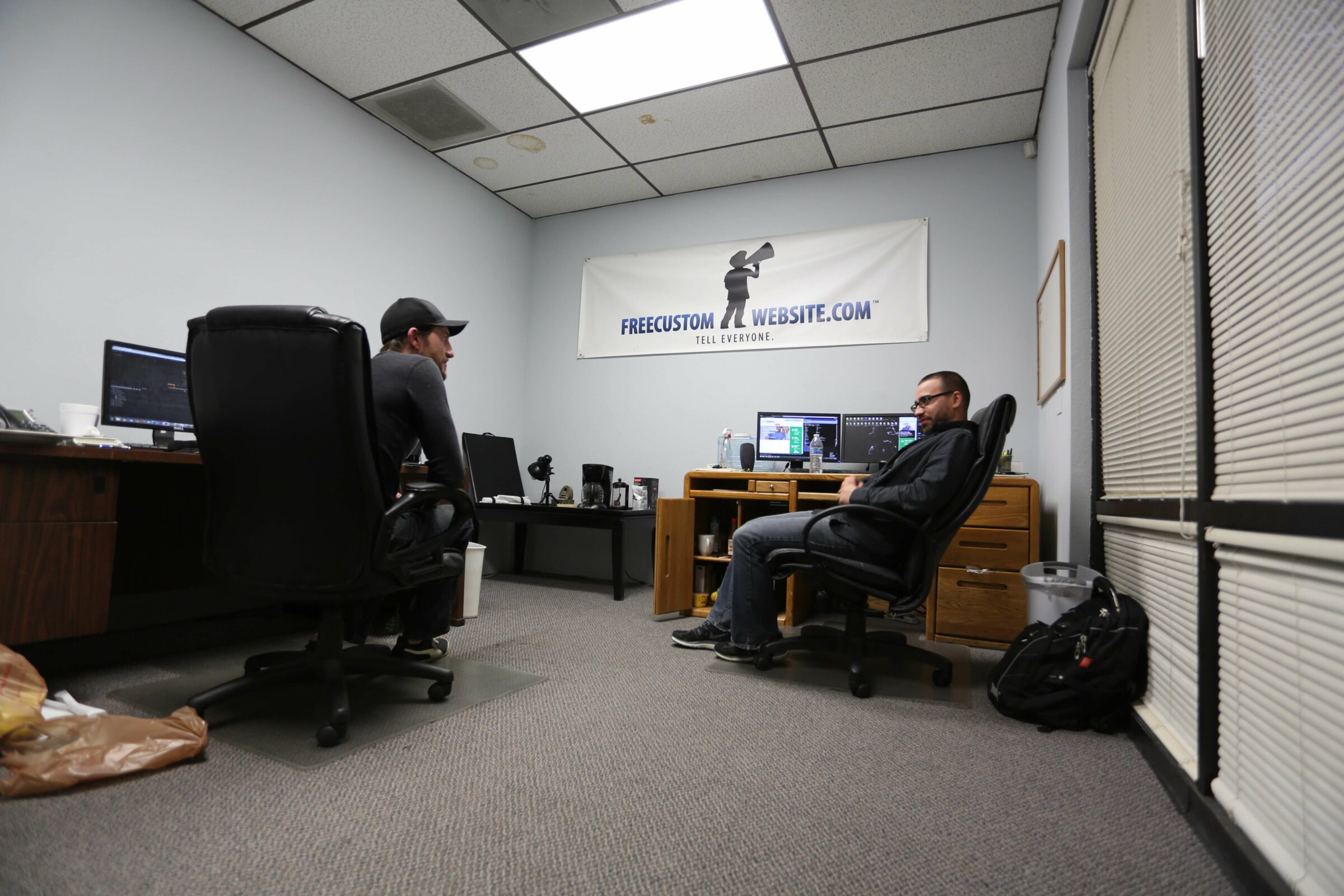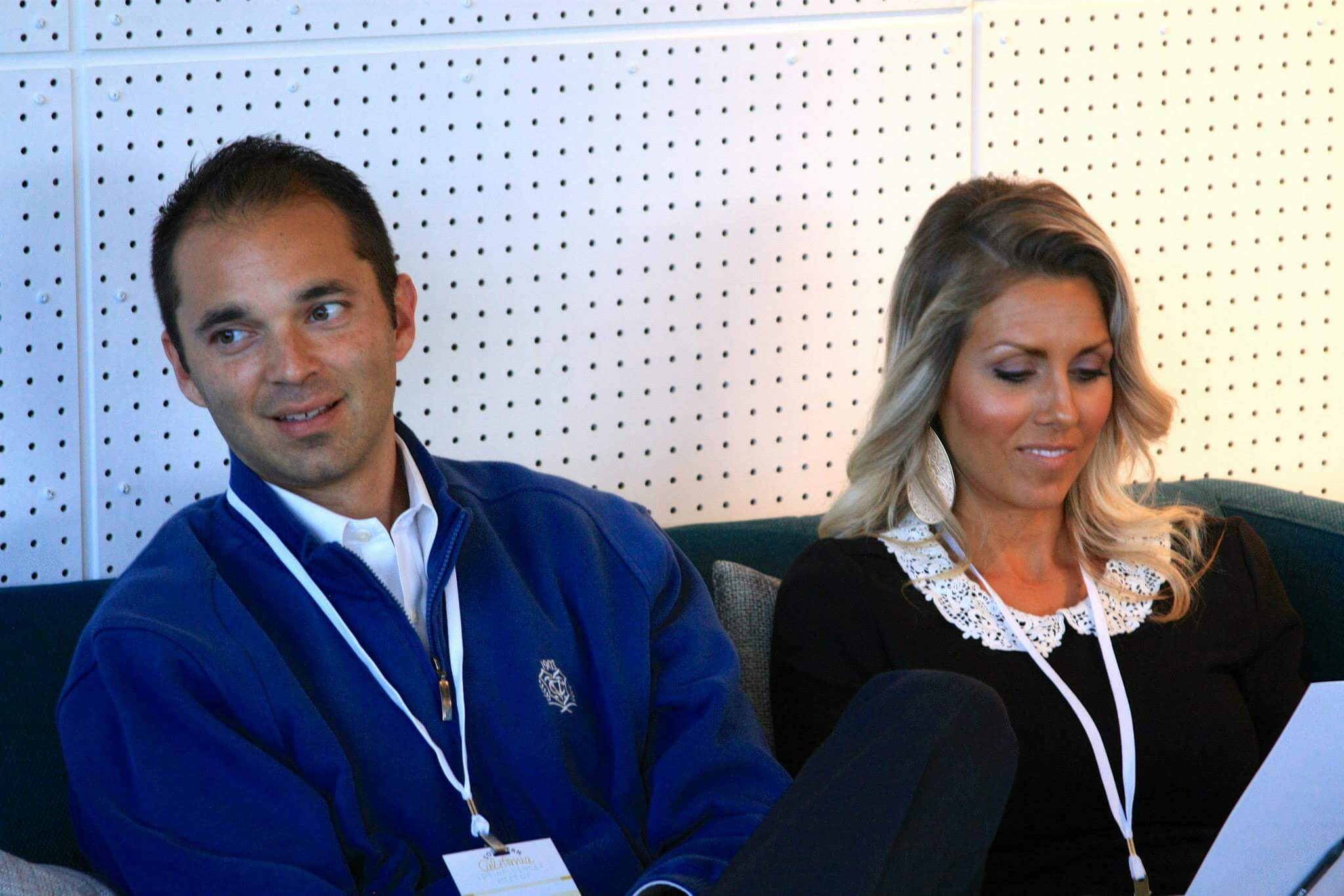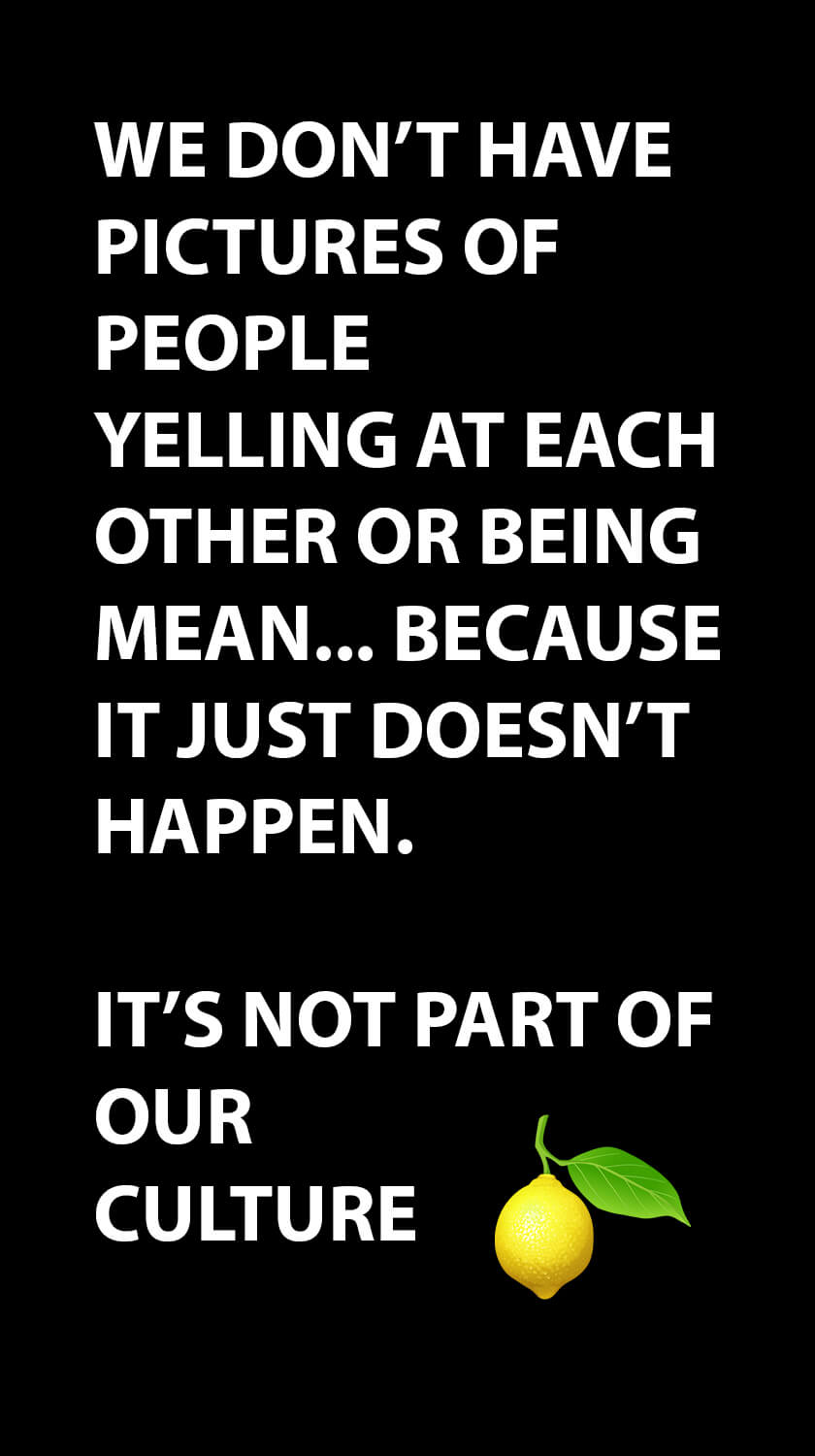When Lemonade Stand was just about a 4 or 5 person shop, I wasn’t thinking about how to build a good company culture.
It wasn’t until disaster struck one of the members of our team, that I fully comprehended what I wanted our culture to be.
I had recently hired the third member of our team because his Google+ profile said that he was a “brown, balding, and genuinely nice guy.” I didn’t care about the brown and balding, but I really wanted to work with a genuinely nice guy, and John seemed like a nice guy.

To be completely honest, John didn’t even have the skills or experience for the role we were trying to fill.
In my experience, you can teach “skills,” but you can’t teach “nice.”
John was overly stressed with life at the time he came on board. He was sick all the time. He’d just had his first kid. He’d racked up some debt. And was trying to learn skills that he didn’t apply for.
I think for John, getting hired was just a way to make ends meet during tough times and a tough economy. I don’t know for sure whether he had a vision of the long-term potential of the company. And truly, that was my fault.
I hadn’t done the things you’ll read about in this guide to build a good company culture.
All I knew when I hired John was that I wanted nice people and a good culture, but I didn’t yet know how to achieve that. I wanted our company to be like one giant family.
Sure we’d have ups and downs, but I wanted people who cared deeply for others well being.
As time went on, we were fortunate enough to hire a couple more amazing team members. Art and then Chris. Both of these guys, fortunately, fit the culture that I wanted to build as well.

We were five strong now. Me, Brian, John, Art, and Chris.
John was still struggling. A young family, a low immune system, and missing quite a bit of work.
Then one day, and I’ll never forget it, John got some news that would turn his world upside down.
John got the news that his mom had cancer. Out of the blue, John’s hero, this amazing selfless lady was facing the biggest challenge of her life.
It wasn’t any easier on her husband and her kids.
Within weeks, she was in hospice… and then she was gone.

John came to work while all of this was going on. He tried to keep focused on his work, his family, and the screen in front of him as tears intermittently rolled down his cheeks.
In the coming days, our hearts went out for our coworker, our friend.
Each of us, got on our best clothes and headed to John’s childhood church to honor such a lady and to support John.
I don’t think any of us will forget that experience. I don’t think it was until then, as we were standing there together mourning with John that I truly understood “culture.”
Culture, to me, is much more than the way we do business. It’s the way we do life.
[bctt tweet=”Culture, to me, is much more than the way we do business. It’s the way we do life.” username=”TrimbleGreg”]It’s how we view our coworkers. It’s how we mourn with them, comfort them, support them, and celebrate them.
It’s how we help others grow, how we lift others up, and how we live by the defined set of values we set for ourselves. It’s how accountable we are to members of our team, our squad, our unit.
“We will spend more than one-third of our waking life with these people, in a company, within a culture,” said John. “So why not have it be with people you like and a culture you enjoy.”
If you can do nothing else during your working career aside from helping to build an amazing culture in the company you work with, you will have accomplished a great feat.
View this post on Instagram
If you’re only looking at your job as a way to make money and then go home, then you will have missed one of life’s great opportunities to be a part of something in which you can make a massive impact in the lives of the people you are with for so many hours of the day.
As time went on in our company, John recuperated. Scarred, but not beaten. He was knocked on his back. We were ready to help pick him back up.

John is now the President of our company (find out how John worked his way to becoming an executive) and has been instrumental in helping establish the culture we all desire. He had been down… and we patiently helped pick him back up. Because of his grit, and humility, he was able to rise out of hard times and become an anchor to our company and culture.
Now it’s his job to lift others when they get knocked down, which he does on a regular basis.
And that is the foundation on which to build a good company culture.
View this post on Instagram
But now for the logistics:
How To Build Good Company Culture
I shared the story about John because it seemed to me that those early challenging times in our company were the most defining.
It became abundantly clear during those times that the most important thing we could do for Lemonade Stand, it’s clients, and the future team members was to build a solid, safe, and exciting culture.
But the first question most people will ask about culture is:
“Is it possible to actually build or create a good company culture, or is that something that happens organically on its own based on the people you hire?”
So… Can You Actually Build A Good Culture?
The quick answer…
YES!
In fact, culture should always be looked at as a proactive activity. The people that surround you will be a function of your commitment to that very culture.
Culture, as is everything, is subject to entropy, or for you science buffs, the second law of thermodynamics. Left alone, a culture will degrade and decay.
It’s like a garden that must be cared for, nourished, pruned, and improved on a regular basis if it is to yield the desired fruit.
How do I know?
Because I’m one of the lucky and unlucky founders that has lived the nightmare of starting a company with a bad culture and founding another more successful company with an amazingly good culture.

What Happened To The Company I Founded That Had A Bad Culture?
The company I founded with a bad culture grew really fast… and then I sold it because it didn’t matter how fast it was growing and how much money I could have made because…
I absolutely hated life.
Every morning… every single solitary dreaded day. It siphoned the life out of me in record time.
No seriously, I thought I was going to die. A trade that I loved, soon became the bain of my existence.
It affected my mental and physical health. It affected my family. There were some days that I couldn’t even eat… and that’s saying a lot.
One day, after a particularly hard day, I came home, laid on my back on the hard floor and cried. I felt like I was in prison to a culture I had allowed to take shape.
It was embarrassing for me to have my wife see me like this. I hid myself from the kids so they didn’t think their dad was a loser. My mind was broken from 3 years of enduring such a bad company culture.

It was no way to go through life. I knew on that day, that I had to do something, and vowed to never work inside of a culture that could take me into the depths of hell again.
But before I go on, let me make the distinction between hard work and bad culture. I love to work hard. Truly, I love working. I prefer it to most other activities. It makes me happy and makes me feel good.
So it’s not hard work that breaks a man or devastates a woman. It’s the culture and the atmosphere in which that man or woman is required to work that can break that individual.
View this post on Instagram
Is There A Step By Step Guide On Building Company Culture?
I’m not sure if there’s a guide out there for crafting a good company culture, which is why I’ve gathered together a step by step list of items to go through as you build or revamp your company culture.
I’ve seen the good, the bad, and the ugly. Truly, it doesn’t matter if you’re a new company or an existing company, you can use these steps to turn your culture in the right direction.
Step 1 – Define Your Core Values
Do you realize how many companies operate without a defined set of core values?
A LOT!
I see this as the initial distinction between my first company with the bad culture and my second company with the good company culture.
My first go around, we had no core values. Leaving your core values undefined is like sailing a ship with no rudder. You’re going to get tossed and taken in the direction of the wind.
In my case, the wind shipwrecked us on a rocky shore.
The most important part of a company culture is the people it hires. But adherence to a solid set of core values will ensure that you get the right people in the first place.
As Jim Collins famously points out in his book “Good to Great,” you’ve got to get the right people on the bus.
But… you’ve got to have a good bus driver if you don’t want the bus to go off the cliff.
Many would say that the CEO or the Founder is the bus driver. I believe our core values are/is the bus driver.
Those core values keep us fixed on our destination. Even if that destination changes, it helps us get to where we’re going safely.
You’ll notice below, that we sandwich our core values between our team and the place where people apply on our public-facing website:

Once you’ve defined your core values, hold yourself and everyone else accountable to live by them. Let them guide the decisions that you make going forward.
…Starting with the people that you hire.
Step 2 – Only Hire People Who Buy Into Your Core Values and Fit Company Culture
The people you hire are everything. As a founder, I am nothing without my team.
But the people you hire can make or break the company. Sure, you can hire people who don’t fit the culture you want to build and it might work out for a few months.
I actually lived through this in my first company. I hired some people out of desperation.
They were good people, but I was only focused on getting the work in front of me done. I didn’t stop to think whether or not they would be a good fit for the company in the long term.
I did a disservice to the people I hired and the company all at the same time.
It wasn’t their fault. It was completely and entirely my fault. I hired them and put them in positions that they weren’t supposed to be in without any core values, any direction, or any well-articulated vision.
Don’t be a bad coach like I was
Like a bad coach who takes a catcher and tries to make him play center field. Or moving a quarterback into the linebacker position.
They may be able to take a few hits but eventually, themselves and the team are going to get hurt.
Protip: I don’t care how much you want to hire someone, how much of a bind you’re in, or how qualified the person is, NEVER hire someone, NO MATTER WHAT, if that person is not a good fit for your culture. Preserve your culture at all costs. It will save you, the company, and that individual a whole lot of heartache. Not to mention a lot of money.
When you hire someone, be up front and let them know that they will be evaluated on their ability to adhere to the core values and fit with the culture.
Because it’s too hard to see beyond the initial interviews, giving a trial or probation period is suggested.
When it comes to hiring people, your culture will actually dictate who gets hired, and who doesn’t. When you look at the hiring practices of Chick-Fil-A, for example, you will see that everything they do is done in a way to preserve their culture.
So… culture, in the end, and from the beginning, provides the direction for which way the company will go. The company will succeed based on the people you hire and their ability to execute, uphold, and adhere to the core values of the company.
Step 3 – Make The Culture of The Company A Place of Safety
Whatever you choose for your core values, make sure that the work environment is first and foremost a place where people feel safe.
Work environments have been notorious for uncertainty, stress, strain, and unrighteous dominion. Where bosses grind down on employees and where open and honest communication is not encouraged.
View this post on Instagram
The world is a sketchy enough place without you needing to go to work feeling unsafe. There is absolutely no room for discrimination, and no room for any verbal, physical, or sexual assault of any kind.
Safety breeds loyalty. When you’re part of a team that you know has your back, then it makes you want to be with those people long term. That safety and loyalty transcend other opportunities even a few extra dollars per month.
It helps people see the long-term vision, believe in it, and then work hard to make that vision a reality.
When valued people in a company help make that vision a reality, they end up being happier and making more than they ever could have by job hopping around trying to squeeze a few extra dollars out of each job change.
Over my career as a founder of a few companies, I’ve had clients and competitors want to poach or steal employees away. It’s stressful for me as a founder because I come to love my team. I want them to see it through and be a part of any big milestones or events the company goes through in the future.
The greatest indication of a great company culture is when team members forgo other opportunities or aren’t even interested in looking for other opportunities because they love the company, it’s vision, it’s potential, and it’s culture.
They commit themselves fully and completely to helping this team win, and they know they can do it. They don’t ask to be traded in the middle of the season during the building years.
The greatest test of a good company culture
It’s also the greatest compliment I can get as well. It says, “Greg… I believe in Lemonade Stand. I know I can help it reach it’s potential. I feel safe and excited to be here, and I’m loyal to the team.”
Recently one of my team members sent me a text with some screenshots of a thread in which one of our clients was trying to hire him away. Here was his response:

I blurred out the bulk of the thread to protect the identity of the client that sent it (who subsequently quit doing business with us because of having his offer turned down by this team member). The blurred out section was a “how much do you make” question with a follow-up offer to come and work for him.
We don’t know if this would have been a good offer or even if it would have been a good situation.
The point is, that this member of our team didn’t even entertain it because he was so committed to the culture that we have built together and the opportunities that will flow from that very culture and the company we are building together as a team.
When the team embodies the core values you’ve created, then they will help shape the culture. When they help shape the culture, they exude loyalty, faith, and excitement for the future of the company.
Central to safety, loyalty, and vision is how we talk to one another inside the company.
Words matter.
Delivery of words matter.
Body language matters.
Speaking Condescendingly
The old saying, “Sticks and stones will break my bones but words will never hurt me” could not be further from the truth. The words we speak can destroy individuals and bring down teams.
There is an old apocryphal writing that states: “The stroke of the whip maketh marks in the flesh: but the stroke of the tongue breaketh bones.”
[bctt tweet=”The stroke of the whip maketh marks in the flesh: but the stroke of the tongue breaketh bones” username=”TrimbleGreg”]Everyone should feel valued and important. There is never a need to talk condescendingly toward any member of the team regardless of their position. From the CEO to a brand new intern, there is never a reason to speak harshly or mean.
It never works.
It has never worked.
Condescension, or the art of making people feel stupid or inept is a giant pet peeve of mine. It will destroy morale and ruin company culture.

Condescension immediately makes it feel unsafe to ask a question, ask for help, or make any kind of comment. It stifles learning, destroys teamwork and ruins collaboration.
I want Lemonade Stand to be a place where people love to go. Not a place where they’ll be made to feel like an idiot on a daily basis.
I’m not saying that it will always be easy or that people will never go through trials when they’re at work, but it should always be a place where they will learn, grow, be respected, and feel safe.
Step 4 – Find Ways To Make The Culture Fun
I’ll never forget reading Tony Hsieh’s story about the company he founded before starting the online behemoth, Zappos. He told of how he built his company LinkExchange and was loving the new adventure. But then the culture degraded to the point where he could barely drag himself out of bed to go into the office.
It got that bad.
He didn’t want to make the same mistake twice, which is why we hear of his second company, Zappos being famous for their culture. Tony’s book Delivering Happiness might be one of the best books I’ve ever read on building a fun culture.
You’ve got to find ways to make the culture fun. Here are some suggestions:
- Celebrate the wins – For instance, every time we close a new deal, it’s a race to see who can press the button fastest in our team management and collaboration platform, Yalla. When a team member presses the button in Yalla chat, it plays a song about winning. We’re winning as a team together whenever that button gets pressed. It’s our favorite sound!
- Celebrate people’s birthdays – Go crazy on people’s birthdays. Make sure they know how much you care that they were born.
- Have weekly lunch and learns – If you’re not swimming in cash and you can’t afford to have a personal chef and all breakfast lunch and dinner paid for by the company, then at least do a lunch and learn once a week and buy everyone some lunch. It’s a great time to get everyone together and eat some good food and learn about each other or about the company.
- Make Education Fun – At our lunch and learns, we get a recap of the wins we’ve had during the week. Then, we learn through an interactive quiz game that everyone does on their phones called Kahoot!
- Streamline your new hire onboarding and training – Make it easy for people who join the team to learn and fit in. We use a platform called Teachable in order to train on almost any process we have inside the company. Team member integration is a massive factor in helping build confidence and get them up to speed quickly.
- Create monthly or quarterly outings or retreats – Have the most creative and social person in your company be in charge of lining up outings. Go to baseball games, have beach parties, go to a fair or amusement park, get together for dinner, go golfing or support each other in extracurricular events. The list could go on, but the key is to just do something. It’s good to be able to interact with your team members and their families outside of the work environment.
- Play some games – We’re not rich, but we have figured out a way to have a ping-pong table and some video game challenges. When people get sick of staring at the screen, they can get up and challenge someone to get the blood pumping again. Just an FYI… I’m the champ.
View this post on Instagram
There are many other things you could do to make the culture fun for the people who work in the company. It will most likely vary from company to company and depending upon the building you’re in.








I’ve seen some companies build basketball courts and provide every kind of amenity you can for someone to have fun. That might cost you lots of money, and if you don’t have the money or the space, then you’ll have to be creative with what you’ve got.
The key is to just do something and be consistent at it. Don’t let the daily grind turn into a daily drag.
Step 5 – Don’t Micromanage People
Micromanaging people is so 20 years ago.
Managers used to think that was the only way to get things done. What we come to find out is that micromanaging is counterproductive to building a good company culture and detrimental to developing leaders.
Hire good people, and then let them do what they do best. Provide good training, yes, but don’t stand over their shoulder and make sure they do everything “your way.”
You hire smart people so that they can bring their intellects to the table and provide insight into areas you might have missed. If you’re going to stifle people, then you might as well not work on a team. You can just people a solopreneur.
Step 6 – Don’t Over Work People
I have a tendency to work a lot. But that is my choice. I actually enjoy it. I prefer sitting down to write a blog or a book to watching the news or a movie when I get home from work.
I have no problem working 12 hour days because, for me, work is not generally work. Instead of talk radio on the commute home, I listen to podcasts or books that are improving my mind and making me a better person, and better at my trade.
I want to be the best, and the best usually outwork other people. As Michael Jordan famously said, “Hard work beats talent when talent doesn’t work hard.”
Having said all that, it is not a good thing for you to create a culture of overwork. Let that be someone’s choice if they want to work more than the required amount. Don’t try and consume their lives by keeping them in the office.
View this post on Instagram
Obviously, in many businesses, there are business hours in which customers and clients expect to be able to get a hold of someone. So, you’ll have to require certain hours, but don’t require more than what is required.
Everything doesn’t need to be ASAP. Everything doesn’t need to be rushed and hurried and stressed. Set and managed customer expectations and then have your team do the best they can.
Always help your team members move toward a balanced life. It will make them and the culture much more enjoyable and their level of service will also improve by helping them to achieve balance.
Step 7 – Encourage Continuing Education
Learning builds confidence. Confidence improves performance. And improved performance creates a sense of purpose and a feeling of accomplishment.
I have seen it time and time again. If someone is staying stagnant, they are generally unhappy. Unhappy people take a toll on the culture.
If people inside the organization aren’t learning, then they cannot grow inside of the company. They can’t take care of bigger accounts, move into more advanced positions, or improve their financial situation.
People that are learning and growing will pass up the people who are just trying to pass the time.
A culture of apathetic and indifferent people will slowly lead to the demise of a company culture. But a culture of learning will produce leaders and masters of the trade. If you have a company of leaders and masters, you will demolish your competition and everyone will make tons more money and have much greater opportunities.
View this post on Instagram
Everyone loves to be on a winning team, and you only win by getting smarter and stronger.
A few suggestions to encourage learning might be:
- Offer incentives for industry certifications.
- Push people into territories of the company that require them to step up.
- Create a book club.
- Share good materials such as podcasts, audiobooks, or blogs you come across in your own education.
- Send people to conferences and ask them to report to the company on what they learned.
- Ask others to present at company lunch and learns.
- Have set aside one on one trainings with team members and ask them to take notes.
- Create a resource center on your website or blog and ask others to contribute to it.
- Create internal training courses for others to learn from your specialty skills.

Before we leave this section I’ve got to give you what I believe to be the absolute best books on building a company culture. If you or the people in your organization master the concepts in these books, you are going to have the most top-notch people on earth.
Title – Author Last Name
- Delivering Happiness – Hsieh
- How To Win Friends and Influence People – Carnegie
- How To Stop Worrying and Start Living – Carnegie
- The Fred Factor – Sanborn
- The Magic of Thinking Big – Schwartz
- The Hard Thing About Hard Things – Horowitz
- Good To Great – Collins
- How Will You Measure Your Life – Christensen
- 7 Habits of Highly Effective People – Covey
- Ego Is The Enemy – Holliday
- The Obstacle Is The Way – Holliday
- Crucial Conversations – Patterson
- Leadership and Self Deception – Arbinger
- The Daily Stoic – Holliday
- Essentialism – McKeown
- Multipliers – Wiseman
- Grit – Duckworth
… and there are so many more. If you have any that you’ve loved that make people and company cultures better, would you be willing to post that book in the comments below?
I’m not going to link to all of the books here because sometimes their links change within Amazon and other outlets, but if you have any question as to which book I’m referring to, just let me know in the comments below as well.
View this post on Instagram
Each of these books has audiobooks as well. Each one will cost $10-20. It will be some of the best money you spend. There is literally no excuse not to read/listen to books.
Before audiobooks became a standard, I could see how it might have been hard to sit down and find time to read a book. But now… if you don’t read these kinds of books, then it’s just because you don’t want to or don’t value learning.
And maybe… just maybe, if learning is part of your core values, then you’d better hire lifelong learners or join a team and culture of lifelong learners if you want to excel in life and in your career.
Step 8 – A Culture of Love
If you’ve gotten this far, then you’re probably one of those lifelong learners. I commend you for that.
Now you get to see what’s in my heart.
You see, I believe that love should be the underlying characteristic of good company culture. If you remember how this blog opened up, I talked about a few of our founding team members.
Our founding team members were loving, empathetic, and caring toward each other and were dedicated to the long-term vision and culture of the company. That, I believe, is what has enabled us to work so well together.
That is also what I believe has made it so easy for others to come on board and feel loved and accepted as well.
That is also what I believe enables us to push each other to be better, to do better, to work hard, to work smart, and to be accountable to each other, to our clients, and ultimately to humanity.
We, each of us, genuinely want the best for each other, and for humanity. We hire good people, with good hearts, because our core values expect nothing less.

Anything I do for my team, I do without one begrudging bone in my body. I do these things gladly because I love them and want them to be the best they can be in their career and in life.
I want them to know that I look at them as my second family… and if someone knows me, then they know how much I love my family.
We all work together so that we can take care of our families.
We count on each other, each and every one of us for our continued subsistence and ability to provide.
Culture Conclusion
I purposely invest in people and culture instead of just trying to do everything to maximize profits and pad my own pockets for some short-term get rich scheme.
My goal is not to get rich quick. My goal is to make the people who work with me rich.
In the meantime, I want to make an impact on the world.
A company that makes tons of money but has no culture or character is a dime a dozen. But a company that improves the lives of the people who work there is a unicorn.
You only hear about unicorns being companies that make billions and the shareholders make out like bandits. I believe a true unicorn is a company that can create and maintain a good culture throughout the life of the business.
View this post on Instagram
No one ever gets to the end of their life and says they wish they had more money. Never. But many people get to the end of their life and wish they had impacted more people, had a better family life, had more friends, or had been a part of something bigger than themselves.
I look at our culture, and I think, I want to make this a place in which if anyone ever leaves, and once the honeymoon is over at a new place, they will look back and long for the days at Lemonade Stand.
Maybe we can’t make that experience for everyone, but I sure hope to try.
Our company culture is everything.
Yours should be too!
Interested in joining our Lemonade Stand? Browse our careers in internet marketing.

